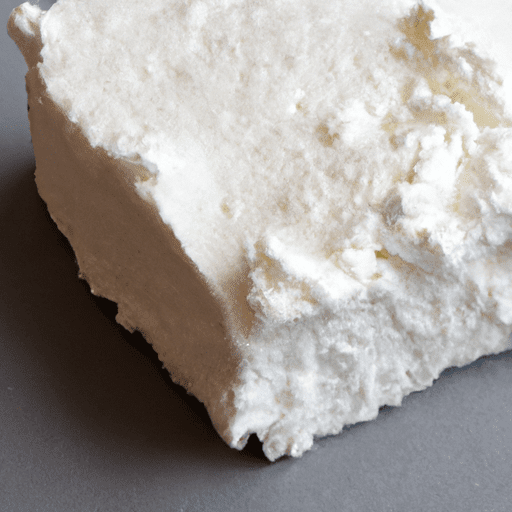Cream Cheese Block: A Versatile Ingredient for Creamy Delights
When it comes to indulgent and luscious flavors, cream cheese block takes the center stage. This rich and creamy ingredient adds a touch of luxury to countless recipes, making it a must-have in every kitchen. From delectable desserts to savory appetizers, the possibilities are endless. Let’s dive into the world of cream cheese block and explore its taste, common uses, nutritional value, and fascinating facts.
Taste and Texture
Cream cheese block is known for its velvety smooth texture and mild, tangy taste. It has a slightly salty edge with a subtle sweetness, making it incredibly versatile. The creamy consistency makes it easy to spread, mix, and incorporate into various recipes. Whether you’re looking to amplify the richness of a dish or balance out flavors, cream cheese block never fails to deliver.
Common Uses in Cooking
Cream cheese block is a star ingredient that can elevate both sweet and savory dishes. Here are some common culinary uses:
1. Desserts and Baked Goods
Cream cheese block shines in the world of desserts, lending its smoothness to classic recipes like cheesecakes, frostings, and pies. It adds a luscious and velvety layer that perfectly complements the delicate sweetness of cakes and pastries. The creamy texture also enhances the richness of creamy custards, mousses, and parfaits, making them utterly irresistible.
2. Savory Delights
Cream cheese block adds depth and creaminess to an array of savory dishes. It’s commonly used as a base for dips, spreads, and sauces. Whether it’s a tangy herb dip or a hearty buffalo chicken dip, cream cheese block provides a luxurious base that makes appetizers a crowd favorite. It can also be incorporated into savory fillings for stuffed chicken breasts, creamy pasta sauces, or even in mashed potatoes for extra decadence.
3. Topping and Garnishing
Cream cheese block can be transformed into delectable spreads to enhance the flavor of bagels, toast, and sandwiches. It pairs exceptionally well with smoked salmon, fresh cucumbers, or even spicy jalapenos for a delightful twist. Additionally, it’s often used as a creamy topping for fruit tarts, carrot cakes, or as a tangy layer in buttery danishes.
Nutritional Value
While cream cheese block is undoubtedly delicious, it’s essential to consider its nutritional value. Here’s a breakdown of its key components:
- Fat: Cream cheese block is relatively high in fat content, providing a rich and creamy texture. It is essential to consume it in moderation as part of a balanced diet.
- Protein: It contains a decent amount of protein, contributing to muscle repair and growth.
- Calcium: Cream cheese block is a good source of calcium, aiding in maintaining healthy bones and teeth.
- Vitamins: It contains vitamins A and B-complex, providing nourishment and supporting overall well-being.
Remember, as with any ingredient, moderation is key to enjoying the flavors while maintaining a healthy lifestyle.
Interesting History and Facts
Cream cheese block has a fascinating history that dates back to the early 1870s. It is believed to have originated in the United States, with William A. Lawrence being credited as the creator. Initially known as Neufchâtel cheese, a creamier version was developed, leading to what we now know as cream cheese block.
Over the years, cream cheese block has become synonymous with iconic dishes like New York-style cheesecake - a testament to its popularity and versatility. Its smooth texture and mild taste have made it a favorite among chefs and home cooks alike, allowing for endless culinary creativity.
Whether you’re spreading it on your morning bagel or incorporating it into a show-stopping cheesecake, cream cheese block is an ingredient that adds unmatched richness and depth to various dishes. Its velvety texture, mild tang, and countless culinary uses make it a must-have staple in the kitchen. So go ahead, indulge in the creaminess, and let your taste buds rejoice!
Cream Cheese Block
Origin: Cream cheese is believed to have originated in the United States and was developed in the early 1870s. It was created by American dairyman William Lawrence, who was attempting to replicate the French cheese Neufchâtel. Cream cheese gained popularity quickly and has since become a staple in American cuisine.
Common Uses: Cream cheese block is a versatile ingredient used in both sweet and savory dishes. It is most commonly known for its use in cheesecakes, frostings, and spreads. It can also be used as a topping for bagels, toast, and crackers. In savory dishes, cream cheese block is used to add richness and creaminess to sauces, dips, and pasta dishes.
Nutritional Benefits: Cream cheese block is a dairy product that contains several nutrients. It is a good source of calcium, which is essential for healthy bones and teeth. Cream cheese also provides protein, vitamin A, and phosphorus. However, it is worth noting that cream cheese can be high in fat and calories, so it should be consumed in moderation as part of a balanced diet.
Unique Properties: Cream cheese block has a smooth and creamy texture due to its high fat content. It is made by combining milk and cream, which are cultured and then coagulated using lactic acid bacteria. This process gives cream cheese its characteristic tangy flavor. Cream cheese block can vary in terms of consistency, with some brands offering a softer texture while others are more firm.
Historical Significance: Cream cheese gained widespread popularity in the United States during the late 19th and early 20th centuries. It became a key ingredient in traditional American recipes such as cheesecake, frosting, and Philadelphia-style cream cheese spreads. Over time, cream cheese has also become popular in other parts of the world, where it is used to create both traditional and innovative dishes.




Use the share button below if you liked it.
It makes me smile, when I see it.